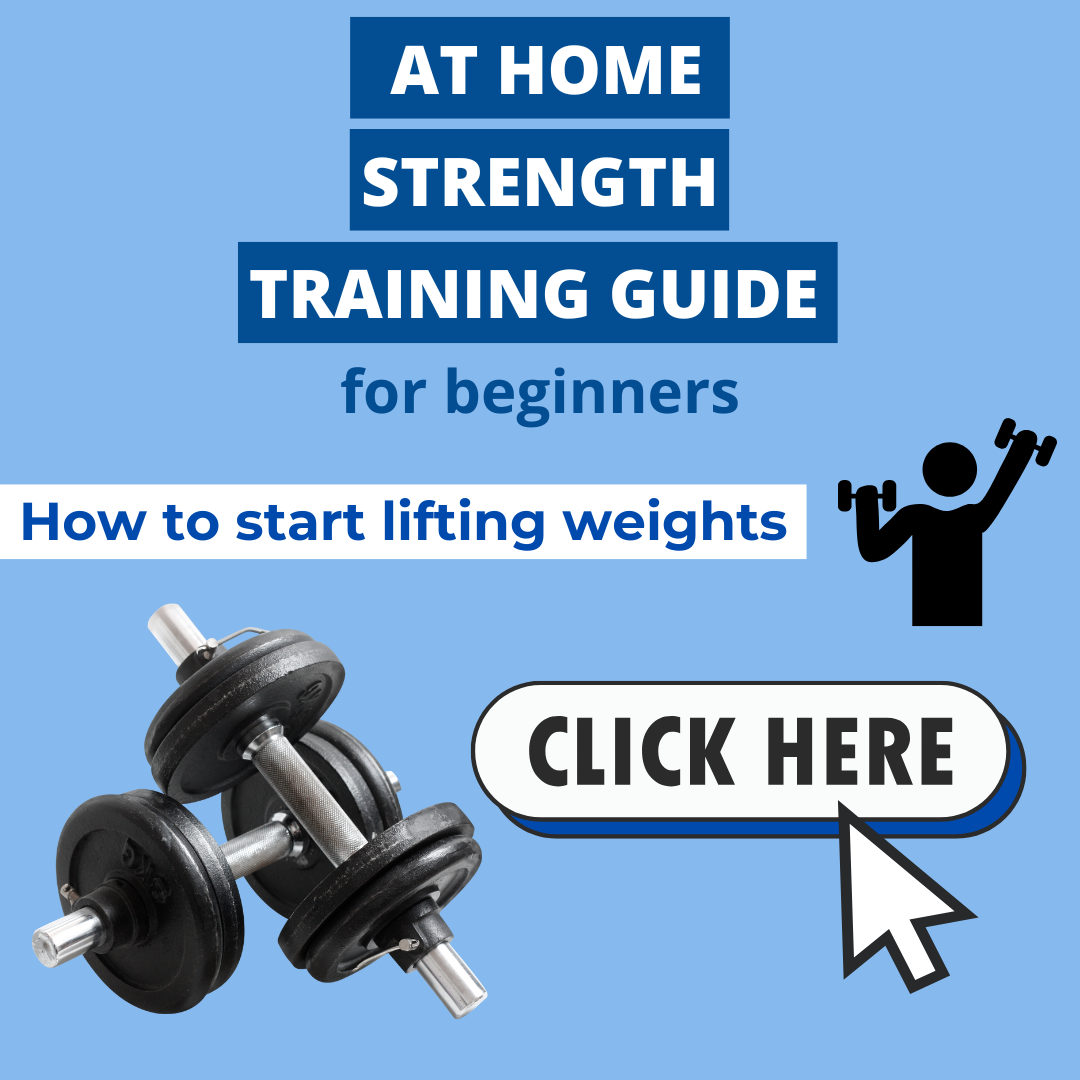
Do you see people in the gym just crankin’ out chin-ups like it’s nobody’s business and think to yourself, “Well, I could never do that”?
That all changes TODAY!
We’ll be talking about not only how to get your first chin-up but also how to keep progressing so you can do 2, 3, 4, 5+ in a row and really start busting out chin-ups like a seasoned pro.
I have a simple 4-step progression for you that’ll help you master the chin-up exercise.
All I ask is that you don’t skip any steps.
The second step builds on the first one, the third chin-up progression builds on the second one, etc.
So if you just jump around and only choose the steps you want to, well, I can’t guarantee your chin-up success.
Following the steps in order will get you the best results and help you make the most progress possible.
Ready and motivated to get started?
Let’s go. 💪🏾
What’s so special about chin-ups?

If you want to build more strength and muscle, the chin-up exercise is one of the best ones you can add to your strength training routine.
Don’t already have a weightlifting program?
You can easily create your own personalized one using this article I wrote HERE.
Just look at gymnasts.
Pound for pound, they are some of the strongest people out there and their physiques look freakin’ incredible and super toned.
Know what they can do?
Lift and control their own body weight, which helps them build muscle and burn more calories at rest (aka increase metabolism).
Don’t get me wrong, exercising alone won’t get you the fitter-looking and more defined body you’re after.
You could do all the chin-ups in the world but ultimately, your nutrition drives results.
One thing specifically you want to do is make sure you’re eating enough protein.
I talk about how to increase your protein intake in THIS BLOG POST.
Keep the nutrition aspect in mind, because I don’t want you looking at being able to do a bunch of chin-ups as some be-all-end-all to a fitter-looking body.
Chin-up progression plan: The 4-step method

I mentioned this in the intro but you need to build up to the point where you can do your very first chin-up or rep out multiple ones in a row.
Lucky for you, if you follow the chin-ups progression plan I’ll get to here in a sec you’ll be well on your way to knocking out chin-ups with perfect form.
Below, we’ll get into:
- How to perform each exercise in the progression with proper form
- The ideal number of sets and reps to do for each exercise
- When to move on to the next exercise in your chin-up progression
Chin-up progression step 1: Inverted barbell rows

The first exercise on your how to get a chin-up checklist is the inverted barbell row.
Instead of your traditional chin-up where you’re vertically pulling yourself up to the bar, an inverted barbell row involves bringing your chest up to the bar from an almost horizontal position.
Video tutorial inverted barbell row
How to perform inverted barbell rows
Start off this chin-up progression with an underhand grip, heels on the ground.
Brace your core (pretend someone’s about to punch you in the gut) and keep your butt tight (like someone’s trying to get a little freaky but you’re just not up for it today).
Row yourself up, bringing your chest up to the bar.
Lower yourself down nice and controlled to the starting position.
Starting position = arms fully extended (I.e. no bend in your elbows)/
A couple of other things you want to make note of…
1.) Keep your elbows as close to your side as possible.
Flaring them out means you’re not doing this chin-up progression with proper form.
2.) If having your heels on the floor is too hard for you, it’s okay to have your feet flat on the floor (like in the demonstration below).
You can build up strength to just have your heels on the ground.
Video tutorial inverted barbell row (feet flat on floor)
Progression plan for inverted barbell rows
Do this chin-up exercise 2-3 times per week for 3-5 sets of 5-10 reps each.
Once you can perform 3 sets of 10 reps each with perfect form, you’re all set to move on to the next exercise.
Chin-up progression step 2: Eccentric-only chin-ups
For starters, what does “eccentric” even mean?
Eccentric = the negative phase of the movement (or lowering yourself down).
Focusing on the eccentric portion of your lifts is actually one of the ways you can progressively overload and get more out of your workouts.
Concentrating on the eccentric side of things will help you out tremendously as you continue on your chin-up progression.
This chin-up progression entails:
A.) Transitioning from horizontally pulling yourself up as we did with inverted barbell rows and actually pulling yourself up vertically like you would with a traditional chin-up.
B.) Increasing muscular tension, which will allow you to build up overall chin-up strength.
Video tutorial eccentric-only chin-ups
How to perform eccentric-only chin-ups
The first thing you want to do is find yourself a small box to step onto.
Since we want the full focus to be on lowering yourself, you want to expend as little energy as possible getting up to the bar.
That’s what you’re going to use the box for.
Instead of jumping straight up from the ground, you’re going to step up onto the box first and then get yourself up so that your chest is at the bar.
Is your chest up to the bar?
Perfect.
Make sure you’re not shrugging your shoulders up to your ears.
A cue to help you not do this is to imagine you’re trying to drive your elbows into your back pockets.
Slowly lower yourself down, taking around 3-5 seconds to do so.
Once you reach the bottom of the movement, your arms should be fully extended.
Drop to the ground, step back onto the box, and then repeat.
Progression plan for eccentric-only chin-ups
Perform this chin-up exercise 2-3 times per week for 3-5 sets of 3-6 reps each.
When should you switch things up and move on to the next exercise in your chin-up progression?
Once you can get 3 sets of 6 reps with proper form.
Chin-up progression step 3: Band-assisted chin-ups

Ahhh, you’re on the brink of success!
You have just one more chin-up progression to go before you can move on to the real thing.
The third step is going to be band-assisted ones.
You might be wondering, “Well, can’t I just use the chin-up machine at my gym if I want to get some assistance?”
That’s a valid question, no doubt.
But here’s why I’m team band > machine-assisted chin-ups and I think you’ll agree after I explain.
The handles can be a little wonky on chin-up machines so it can be hard to get the necessary grip you need.
With band-assisted chin-ups, you’re able to better mimic the form you’ll need to perform chin-ups without the band.
The closer you get to the bar, the less assistance you’re getting, which is good because it allows you to become more accustomed to doing an actual chin-up with your own body weight.
Video tutorial band-assisted chin-ups
How to perform band-assisted chin-ups
Start with the band you’ll be most comfortable with.
The thicker bands are for beginners and they’ll provide you with the most assistance.
Don’t worry about which band you start with!
It’s all about progression and eventually, you’ll work your way up to the band that gives you the least assistance.
And then BOOM, you’ll be getting your very first chin-up without any bands at all.
Start by putting your foot inside the band (The band should be wrapped around the bottom of your foot).
Arms should be fully extended.
As you pull yourself up, brace your core.
Focus on bringing your chest up to the bar, not pulling and straining trying to get your neck up to the bar.
And make sure you’re keeping your shoulders away from your ears (Push them down into your back pockets).
Slowly lower yourself back down with control to the starting position.
It’s important you perform full ROM (range of motion) reps.
No half reps where you’re swinging, using momentum, and flailing yourself up to the bar!
Progression plan for band-assisted chin-ups
Practice assisted chin-ups with a band 2-3 times per week for 3-5 sets of 6-10 reps each.
Keep in mind you‘re probably going to spend a little bit more time on this chin-up progression, depending on which band you start with.
After you’re able to do 3 sets of 10 reps using a particular band, you’re ready to move on to the next thinner band.
Once you can get 3 sets of 10 reps using proper form on the thinnest band, guess what?
You, my friend, are officially ready for the last step in the chin-up progression, and that is…
PERFORM YOUR VERY FIRST BODY WEIGHT CHIN-UP!
What whattttt!!!
Chin-up progression step 4: Old-fashioned chin-ups
This is the last step of your chin-up progression, doing the real thing–a traditional one using just your own body weight.
I just want to say this before we get into the form and all that.
You’ve built up the strength to get your very first chin-up.
You’ve put in the work, you’ve worked hard.
You went through all the steps, all the sets and reps.
So at this point, you only need to do one thing, and this is…
Actually believe you can do it.
You.
Are.
Ready.
Okay?
Video tutorial body weight chin-up
How to perform a traditional chin-up
Start from a dead hang position, arms fully extended (no bend in your elbows).
Palms should be facing you, hands roughly shoulder-width apart.
Send your shoulders into your back pockets (I.e. not shrug them)
Think about driving your elbows down and aiming for the side of your ribs as you pull your chest up to the bar.
Once you reach the bar lower yourself back down into the starting position.
How do you train to get more chin-ups?
So you’ve gone through the chin-up progression plan and got your very first one!
Congratulations 👏🏾
But where do you go from here?
How do you keep progressing to get more chin-ups?
Here are a couple methods to get you repping out multiple chin-ups in a row 💪🏾
Grease the groove (GTG)

You get better at chin-ups by being consistent about doing them.
And that’s exactly what the “grease the groove method” is all about.
Here’s how it works…
You do sets of low-rep chin-ups spread out over the course of your day.
For example, let’s say you’re stuck on one chin-up.
To apply GTG, you could do something like this:
1 chin-up after breakfast, lunch, dinner, and then before bed.
So 4 chin-ups total.
I know that might not seem like much but here’s the thing.
You’re not going to stay doing one chin-up at a time forever.
You want to build up to doing 2 chin-ups at those times, then 3, then 4, etc.
As time goes on, you’ll start repping out more and more chin-ups until you reach the point where you say to yourself, “Hey, I’m pretty good at this!”
The key to all this is that you’re not pushing yourself anywhere even remotely close to failure.
Always remember that.
Cluster sets

Cluster sets are another way to level up your chin-up game.
You have a giant, overarching set that you break up into smaller sets, taking a slight rest in between each smaller set.
A little confused?
No worries, I got you!
Here’s an example of what I’m talking about:
Let’s say you’re currently able to do 6 chin-ups.
You could perform a cluster set by doing something like 4 mini sets of 3 reps each.
You’d perform 3 reps and take a 15-20 second break.
Another 3 reps, take a 15-20 second break.
3 more reps, take a 15-20 second break.
And then finally, your last 3 reps.
See how that works?
Rather than doing your 6 chin-up max all in one set, you’ve broken things up so that you’re able to get more volume and practice with your chin-ups.
Chin-up progression: Adding weight
You’re really getting good at this whole chin-up thing and now you’re looking for even more of a challenge.
That’s where adding weight comes in.
But when should you do it?
And how heavy should your weights be?
Once you can get somewhere between 10-12 chin-ups with perfect form (aim for the higher end if you can!) you’re ready to add some weight.
Small steps work best.
Don’t try to load up with 45 pounds or anything like that 😂
I’d say 5-10 pounds at the most and then you can just work your way up from there.
If you want a systematic way that lets you know when exactly you should be going up in weight, read this post right HERE on the double progression method.
Extra exercises to improve your chin-ups

Yes, you’ll get better at chin-ups by actually practicing them.
But chin-ups aren’t the only exercise that will help you build up the strength to get more.
I like to think that getting better at chin-ups is kind of like a tree.
As I’m typing this out, I laughed at myself because I realize that probably sounds a little strange 😅
But give me a second to land this chin-up analogy.
Chin-ups are the tree’s trunk and should be where you put most of your effort.
But a tree has other parts to it (I.e. the branches and leaves) and that’s where accessory exercises come into play.
Think of accessory movements as supporting exercises that will help you become better at chin-ups.
They work the same muscles as chin-ups (back, biceps, and core).
So, ultimately, doing accessory exercises translates into improving your chin-ups.
And makes for a healthier, more complete tree.
Here are a few of those exercises:
Face Pull (can also do this standing)
Bicep Curl (can use dumbbells as well)
Chin-up progression plan FAQs
How long does it take to improve chin-ups?
Everyone’s different so unfortunately, there’s not a definitive, black or white answer to this question.
What I can tell you is that if you go through the chin-up progression steps laid out in this article, you’ll see an improvement in your chin-ups.
Why are chin-ups so hard for me?
Chin-ups aren’t something most people are just naturally good at.
It’s like anything in life, it takes practice if you want to get better at it.
The same way it takes practice if you want to get better at playing the guitar, improve your golf swing, or learn a new language.
If chin-ups were something that came easy to everyone, there would be a ton of people walking around just cranking out 20 chin-ups at a time.
But you don’t see that because it takes hard work and commitment to reach the point where you’re repping out multiple chin-ups in a row.
You taking the time to read this article tells me you’re serious about improving your chin-ups and that’s a great first step to take.
You should be proud of yourself!
And now that you have the knowledge and info, it’s just a matter of applying it.

What's up?
I’m Chad, I’m happy you’re here! I’m a certified personal trainer and my goal is to help you form practical, sustainable habits that lead to lifelong fitness results. If you want to lose fat, build muscle, and live a healthier, happier life then you’re right where you need to be. 💪🏾



